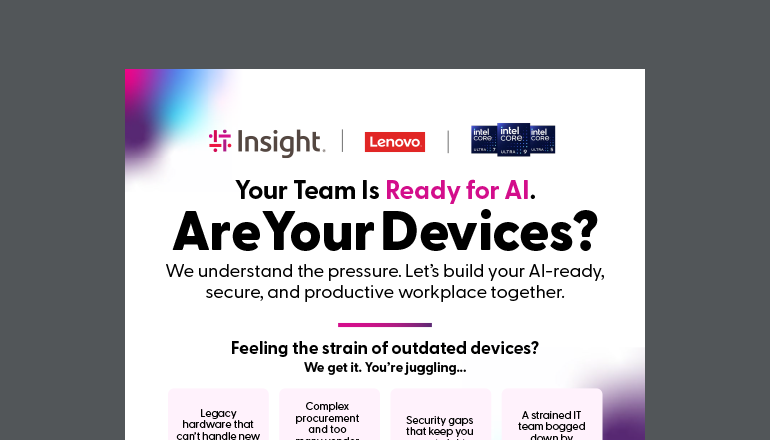Article Active Directory: Boost Productivity and Security
By Insight Editor / 26 Sep 2015

Applications and devices your business use, whether on premise or in the cloud, typically have different access and verification requirements. Employees who access and use these apps have the challenge recalling an assortment of user account names and passwords. There are other challenges to maintain efficiency and security, which include: ensuring access to a specific device, customizing user settings and approving line-of-business access.
What is Active Directory?
Active Directory connects all individual devices and applications in your network to a database system that makes it easy to access your information from anywhere. It also enables your network administrators to grant special permissions to specific users. While the first components are indispensable for helping you run your business as efficiently as possible, the final component is arguably the most valuable as it allows your network administrators to have better control over access to your data.
As a leading provider of IT solutions for mid- and enterprise-level businesses in Canada, Insight knows the impact AD can make on businesses. This complete identity and access management solution integrates core directory services, advanced identity controls, and will help your IT administrators govern access to your company’s data. In this article, we examine some of the benefits of implementing AD in you environment.
Giving employees secure, single sign-on (SSO) access to login, access applications and tailored device settings means they’ll only have to remember one ID and password; reducing confusion and increasing efficiency. Other advantages to Active Directory (AD), include:
- On average, AD management solutions increase productivity by over 60%
- AD management also reduces human errors by an average of 35%
- Over 95% of Fortune 1000 companies use Active Directory to manage their IT infrastructure, verification, and control access to applications
1.) Monitor your network and control access to computers and other devices
Businesses that do not utilize AD management normally have their computers set up in workgroups that run on the same Local Area Network (LAN). What this means is that each computer acts as a standalone machine, which can make it very difficult for them to communicate with each other. It makes managing a consistent platform and user experience almost impossible for your IT staff.
With AD management solutions, your business computers and other hardware would be connected to a centralized domain, allowing all your an employee’s information to be stored in a central location rather than locally on their personal computer. This central location can be easily managed by IT administrators and better track everything in your network. They have easy, one-touch access to a catalog of all devices registered on your network.
2.) Manage access to your ‘mission-critical’ applications
Being able to control and manage access to your company’s applications is important. Granting permission is especially important as different employees may need access to various applications in order to do their work. Active Directory also makes it much easier for your IT staff to suspend access to employees that leave your business.
Rather than using time and resources to manually go through these processes, AD management tools allows your IT staff to more rapidly provision and de-provision applications while controlling access to important data. Active Directory helps to ensure that only authorized users have access to the apps needed to complete their tasks.
3.) Enhance your business compliance and security capabilities
While some seem to think that AD may result in security issues, the reality is that security actually increases and tightens with this solution. Adopting AD allows your employees to focus on creating one strong password, making it much simpler for them to remember and keep private.
Aside from making it easier for employees to manage their passwords, AD solutions also helps you monitor access attempts. This can assist your IT staff to track and report any inconsistent access patterns such as unknown source logins, repeated failed login attempts, as well as logins from suspicious geographic locations. This will give your users a peace of mind and effectively increasing the privacy of your company’s data.
4.) Customization and self-service capacity
With Active Directory, each of your employees get a personalized view of their applications. They will still have the ability to customize their apps to their personal preference in order to complete their tasks more efficiently.
Your IT administrators can also view each access panel to ensure the right access, to the right employees, at the right time. In addition, self-service options such as password reset, account unlock, and profile management will free up your on-site IT administrators to take care of more important issues.






